Polish Food: Basic Overview
Common Ingredients
Common Cooking Methods
Courses
Meals
Key Taste
Eating Etiquette
Meal Presentation
Culinary Festivals
Influence and Fusion
Popular Types of Polish Food
-
Soups
In Polish cuisine, soups play a crucial role, offering a wide range of flavors from sour to rich and hearty.
These soups often incorporate a variety of vegetables, meats, and sometimes even fruits for a unique twist.
A hallmark of these dishes is their adaptability to both hot and cold servings, making them suitable for any season.
They are typically garnished with sour cream, hard-boiled eggs, or fresh herbs, enhancing their complexity and appeal.
-
Stews
Polish stews are the epitome of comfort food, often featuring a mix of meats and vegetables slow-cooked to perfection.
These stews are notable for their rich, deep flavors achieved through the combination of various kinds of meat, sauerkraut, fresh cabbage, and a blend of spices.
Traditionally associated with major holidays and family gatherings, these dishes are designed to be savored over time, often tasting even better the day after they are made.
-
Dumplings
Made from unleavened dough, these dumplings are filled with a range of ingredients from potatoes and cheese to fruits, making them suitable for any course of a meal.
The preparation method, which involves boiling followed by frying or baking, adds a delightful texture contrast to the dish.
Often served with accompaniments like sour cream, fried onions, or jams, these dumplings are a beloved tradition in Polish culture.
-
Cakes and pastries
From the intricate layers of poppy seed rolls to the deep-fried splendor of doughnuts filled with jam or cream.
These treats are central to Polish festivities, especially during Christmas and Easter.
The variety of cakes and pastries is often adorned with fruits, nuts, and icing.
Whether enjoyed as part of a family gathering or a simple afternoon tea, they are a testament to the sweet side of Polish culinary artistry
Polish dishes are delicacies commonly savored in Poland, a country nestled in Central Europe. The cornerstone of Polish meals includes a variety of meats, with pork, chicken, and game being particularly prevalent.
Vegetables also play a significant role, with a wide array used in dishes, including root vegetables like potatoes, carrots, and beets.
Polish cuisine is strongly influenced by the culinary traditions of neighboring countries. In particular, German dishes, Hungarian specialties, and Russian food offerings play a quite significant role in its development.
Featuring a diverse array of breads, the iconic pierogi with various fillings, and a wide selection of seasonal soups and stews, Polish cuisine is rich and varied.
Meals typically consist of a soup starter, a main course with sides, and dessert. Fermented foods like pickled vegetables and rye soups add a distinctive tang to the flavor palette.
I’ll take you on a journey through Poland’s culinary landscape, highlighting its iconic dishes, traditional food, global charm, and health perks.
You’ll also get a glimpse into the rich history of Polish food, the significance of meals during festive times, dining customs, and expert advice on pairing food and drinks.
32 Popular Polish Dishes with Filters
Discover the top 32 beloved Polish dishes, meticulously organized by popularity for your convenience! Navigate through a variety of filters like ingredients, flavors, cooking techniques, types of dishes, meal courses, and their worldwide fame.
Plus, you have the option to explore categories such as traditional fare, national favorites, and street eats.
Pierogi
- National
- Street Food
- Traditional
Pierogi is a national Polish dish consisting of dough dumplings filled with a variety of ingredients. They are a versatile food that can be served as an appetizer, main course, or dessert, depending on the filling.
The dough is typically unleavened and can be filled with potato, cheese, sauerkraut, ground meat, mushrooms, or fruits for sweet versions. Pierogi are boiled and then sometimes fried or baked in butter before serving.
They are often accompanied by sour cream, fried onions, or both, and dessert versions may be served with applesauce, jam, or cream. This dish is deeply embedded in Polish culture and has variations across Central, Eastern, and Southeastern Europe.
Famous variations include pierogi ruskie (filled with cheese and potato), pierogi z mięsem (meat-filled), and sweet pierogi filled with fruits like cherries or strawberries.
Bagels
- Street Food
- Traditional
Bagels, also known as bajgiel or beigel, are a traditional bread product originating from the Jewish communities of Poland. They are characterized by their dense, chewy texture and distinctive ring shape, achieved by first boiling the dough and then baking it.
Bagels are often topped with seeds like poppy or sesame and can be found in various flavors and styles, including the famous Montreal-style bagel.
While bagels are now enjoyed worldwide, they hold a special place in Polish, Jewish, and American cuisines, often associated with breakfast or brunch menus.
Kiełbasa
- Street Food
- Traditional
Kiełbasa, a key element of Polish cuisine, includes various meat sausages like pork, beef, and poultry. Each Polish region has its unique kiełbasa, such as kiełbasa lisiecka from Małopolskie.
Notably, several types like kiełbasa lisiecka and kiełbasa krakowska have earned EU and UK geographical protections, emphasizing their cultural importance.
Kiełbasa is central to Polish celebrations and is versatile in its use, featuring in dishes from cold cuts to stews like bigos, and often paired with beer or vodka.
Pączki
- Street Food
- Traditional
Pączki are a traditional Polish pastry, similar to doughnuts, and are a popular treat in Poland and among Polish communities worldwide.
Made from a rich dough that includes eggs, fats, sugar, yeast, and sometimes milk, pączki are deep-fried and then filled with various sweet fillings such as jam, custard, or cream. They are typically covered with powdered sugar, icing, or glaze.
Pączki are especially consumed on Fat Thursday, the last Thursday before Lent, as part of a tradition to use up all the lard, sugar, eggs, and fruit in the house, which are forbidden during Lent.
Barszcz
- National
- Traditional
Barszcz, also known as borscht, is a traditional Polish soup recognized for its distinctive red color derived from its main ingredient, beetroots.
This sour soup, which can be served hot or cold, is a versatile dish that may include a variety of vegetables like cabbage, carrots, onions, potatoes, and tomatoes, along with meat or fish, or it can be purely vegetarian.
It’s commonly garnished with smetana or sour cream, hard-boiled eggs, or potatoes. Barszcz is enjoyed across Eastern Europe, with each region offering its own variations of the soup.
In Poland, barszcz is particularly associated with Christmas Eve dinner and other festive occasions.
Sernik
- Traditional
Sernik, also known as Polish cheesecake, is a traditional dessert in Polish cuisine. It is made from a unique type of curd cheese called “twaróg,” which gives it a distinctive texture and flavor different from cheesecakes made with cream cheese.
Sernik is often flavored with vanilla, lemon zest, or raisins and can have a pastry or crumb base. There are many variations of sernik, including those topped with fruit or chocolate. This dessert is particularly popular during celebrations and family gatherings, such as Christmas and Easter.
Naleśniki
- Street Food
- Traditional
Naleśniki, also known as Polish pancakes, are a traditional dish in Polish cuisine, resembling thin crepes. They can be served with a variety of fillings, both sweet and savory, such as cheese, fruits, jams, or meats.
Naleśniki are versatile and can be enjoyed as a breakfast item, dessert, or main course, making them a beloved choice in Polish households.
Gołąbki
- Traditional
Gołąbki, also known as golabki or stuffed cabbage, is a traditional dish of Polish cuisine, consisting of boiled cabbage leaves wrapped around a filling of minced pork or beef, chopped onions, and rice or kasza.
This dish is often served with tomato sauce and is considered a comfort food in Poland, enjoyed during festive occasions such as weddings and family reunions. Variations of gołąbki can be found across Central and Eastern Europe.
Żurek
- Traditional
Żurek, also known as żur, is a traditional Polish soup made from soured rye flour and meat, often including boiled pork sausage or smoked sausage, bacon, or ham. This dish is a staple of Polish cuisine, known for its hearty and sour flavor profile.
Żurek is traditionally served in a bread bowl or with boiled potatoes, and it has regional variations such as żur śląski in Silesia, where it is poured over mashed potatoes, and żur owsiany in Polish Subcarpathia, made with fermented oatmeal.
A notable aspect of żurek is its association with Easter celebrations in Poland, making it a significant part of holiday meals.
Rosół
- National
- Traditional
Rosół is a traditional Polish soup made primarily from a clear meat broth, most commonly chicken. Known for its healing properties, especially as a cold remedy, it is a staple at family dinners and is traditionally served at weddings.
The soup is often accompanied by capellini pasta. Famous variations include Rosół Królewski, made with a mix of meats and vegetables, and Rosół myśliwski, which features a variety of wild birds and a hint of roe deer meat.
Kotlet Schabowy
- National
- Traditional
Kotlet Schabowy, also known as Schabowy or Schaboszczak, is a traditional Polish breaded cutlet made from pork, chicken, or turkey. Kotlet Schabowy has a history dating back to the 19th century and is a popular choice for main courses in Poland.
This dish, resembling the Viennese schnitzel, is a staple of Polish cuisine and is typically served hot with sides such as mashed potatoes, fried mushrooms, or salads.
The preparation involves tenderizing the meat, marinating it in milk and onions, coating it in flour and breadcrumbs, and then frying it until golden.
Bigos
- National
- Traditional
Bigos, known as hunter’s stew, is a traditional Polish dish made from various kinds of meat stewed with sauerkraut, fresh cabbage, and a blend of spices.
Bigos is a national dish that embodies the concept of comfort food in Polish and Lithuanian cultures. The dish is versatile, allowing for a wide range of ingredients based on availability, including different types of meat like pork, beef, poultry, game, sausages and charcuterie.
Bigos is traditionally associated with major Catholic holidays such as Christmas and Easter, where it is prepared in large quantities and enjoyed over several days.
Zapiekanka
- Street Food
Zapiekanka is a toasted open-face sandwich that became a popular street food in Poland during the 1970s. It consists of a halved baguette or a long roll of bread, topped with sautéed white mushrooms, cheese, and ham, and is traditionally served hot with ketchup.
Zapiekanka can be found with various additional toppings and sauces, earning it the nickname “Polish pizza.” Some of the famous variations include “diablo” with spicy sauce and bacon, “Gypsy” with sweet and sour sauce and ham, and “Hawaiian” with pineapple.
Originating as a result of a slight relaxation in private enterprise during the Polish People’s Republic era, zapiekanka remains a beloved quick meal among students and a staple of Polish street food culture.
Chlodnik
- Traditional
Chłodnik, a traditional Polish soup, is a refreshing cold dish often enjoyed during the warmer months. It is made from a base of sour milk, kefir, or yogurt, combined with young, tender beetroots, cucumber, radishes, and fresh herbs like dill.
This soup is known for its vibrant pink color, which comes from the beetroots. Chłodnik can be served with a hard-boiled egg or boiled potatoes on the side, making it a light yet satisfying meal.
In Poland, chłodnik is particularly popular in the summer and is often associated with the seasonal availability of fresh, young vegetables.
Krokiety
- Street Food
- Traditional
Krokiety, a traditional Polish dish, are breaded rolls that are typically filled with meat, sauerkraut, mushrooms, or cheese, then deep-fried. They are often served with a side of clear broth or beet soup.
This dish is a popular part of Polish cuisine and can be found in many restaurants and as street food. Krokiety are especially enjoyed during the Christmas season and other festive occasions.
Placki Ziemniaczane
- Street Food
- Traditional
Placki Ziemniaczane, also known as potato pancakes, is a traditional dish in Polish cuisine. They are shallow-fried pancakes made from grated or ground potato, often mixed with flour, and egg, and sometimes flavored with grated garlic or onion.
This dish can be served with a variety of toppings, ranging from savory options like sour cream or cottage cheese to sweet ones such as apple sauce or sugar.
Placki Ziemniaczane is versatile and can also be made from mashed potatoes to create pancake-shaped croquettes.
Sałatka Jarzynowa
- Traditional
Sałatka Jarzynowa, also known as Polish cold vegetable salad, is a traditional dish of Polish cuisine. It is a mix of cooked and finely chopped vegetables, including potatoes, carrots, peas, and often root celery, combined with diced boiled eggs and sometimes apples.
The salad is bound together with mayonnaise and flavored with salt, pepper, and sometimes mustard. It is a staple at family gatherings and festive occasions such as Christmas and Easter, where it is enjoyed as a side dish.
Śledź W Śmietanie
- Traditional
Śledź w Śmietanie is a traditional Polish dish consisting of herring fillets in a rich sour cream sauce, often flavored with onion, apple, and a touch of sugar.
This dish is part of the broader category of herring-based dishes in Polish cuisine, which are enjoyed as appetizers or part of the main meal.
Śledź w Śmietanie is particularly popular during the Christmas Eve feast, known as Wigilia, where it is served as one of the traditional twelve dishes.
Mizeria
- Traditional
Mizeria is a traditional Polish salad made from thinly sliced cucumbers, often dressed with sour cream or kefir and vinegar, and sometimes oil. It may also include ingredients like onions, pepper, lemon juice, sugar, and herbs such as dill, chives, mint, or parsley.
This dish is commonly served alongside the main course and is one of the most beloved salads in Poland. The name “Mizeria” is derived from the French word for poverty, reflecting the dish’s humble origins and the aristocracy’s initial disdain for this simple, peasant fare.
Flaki
- Traditional
Flaki, or flaczki, is a traditional Polish tripe stew, recognized as a national dish within Polish cuisine. The main ingredient is thin strips of beef or pork tripe, which gives the dish its name, derived from the Polish word for “guts.”
Flaki has a rich history in Poland, dating back to at least the 14th century, and was a favorite of King Władysław II Jagiełło. The stew is seasoned with a variety of spices, including marjoram, nutmeg, and paprika, and may include other ingredients like carrots, parsley, and beef broth.
Variations of flaki can include the addition of meatballs, as seen in the Warsaw-style flaki. This dish is commonly served at Polish weddings and enjoyed with fresh bread.
Oscypek
- Street Food
- Traditional
Oscypek, also known as Oszczypek, is a smoked cheese from Poland’s Tatra Mountains, made with at least 60% salted sheep’s milk. It’s traditionally crafted by a “baca,” a shepherd and cheese expert, into spindle shapes and smoked for its distinct flavor.
Commonly enjoyed during holidays, especially pan-fried with cranberry jam, Oscypek is produced only from late April to early October when sheep feed on fresh mountain grass.
A smaller variant, redykołka, is also popular. Since February 14, 2008, Oscypek has held the EU’s Protected Designation of Origin (PDO) status.
Kopytka
- Traditional
Kopytka, also known as “little hooves,” are a traditional type of Polish dumpling made primarily from boiled potatoes and flour.
Resembling Italian gnocchi in shape and texture, these dumplings can be served as a main dish or a side, with savory options including toppings like cheese, fried bacon, or onions, and sweet variations featuring butter, sugar, or cinnamon.
Kopytka are versatile and can be paired with a variety of sauces, making them a beloved comfort food in Polish cuisine.
Golonka
- Traditional
Golonka, referring to a ham hock or pork knuckle in Polish cuisine, is a hearty dish that involves the lower portion of a pig’s leg. This cut is typically slow-cooked or braised to tenderize tough meat and connective tissues, resulting in a flavorful and succulent meal.
Golonka is often seasoned with herbs and spices and served with sides like sauerkraut or mashed potatoes, making it a staple in traditional Polish dining, especially in regions close to the Czech border where it’s particularly popular.
Makowiec
- Traditional
Makowiec is a traditional Polish pastry, known for its distinctive spiral of poppy seed filling. This roll is a staple during major holidays, especially Christmas and Easter, symbolizing a sweet treat to mark festive occasions.
This pastry is a cherished part of Polish culinary tradition, enjoyed by families during special celebrations.
Zrazy
- Traditional
Zrazy, a traditional dish of the Polish-Lithuanian Commonwealth, is a type of meat roulade popular in Poland, Lithuania, and western Belarus. It consists of thin slices of beef rolled with a filling of vegetables, mushrooms, eggs, and sometimes potato.
The origins of Zrazy are debated between Poland and Lithuania, reflecting its deep historical roots in the region’s culinary traditions. This dish, served hot, is a testament to the rich, meat-centric nature of Polish cuisine and is enjoyed in various forms across the country.
Kluski Slaskie
- Traditional
Kluski Śląskie, also known as Silesian dumplings, are a traditional dish from the Silesia region of Poland. These dumplings are made from mashed boiled potatoes and potato flour, often featuring a small indentation on top for holding gravy.
They are a key component of a classic Silesian meal, typically served with beef roulades and red cabbage, especially during Sunday or festive family gatherings. Variations include darker dumplings known as “czorne kluski” or “kluski polskie.”
Kabanosy
- Street Food
- Traditional
Kabanosy, also known as cabanossi or kabana, are long, thin, dry sausages originating from Poland. They are a traditional Polish food, known for their smoky flavor and varying textures from soft to very dry.
Kabanosy are typically made from pork, but variations include chicken and turkey, especially in kosher and halal diets. These sausages have a historical significance, being a durable food choice for soldiers and travelers due to their long shelf life.
Modern kabanosy come in different flavors, with “hot” and “mild” being the main spice variations. They are often enjoyed as an appetizer, snack, or added to dishes like pizzas, but traditionally they were consumed alone or with bread and cheese.
Zupa Gulaszowa
- Traditional
Zupa Gulaszowa is a traditional Polish soup that is hearty and rich, often made with beef or pork, vegetables, and a blend of spices, thickened with flour or potatoes.
It is a beloved comfort food in Poland, enjoyed in various forms across the country, with some regions adding their unique twist to the recipe. This dish is particularly popular during colder months and can be found in many Polish homes and restaurants.
Faworki
- Traditional
Faworki, also known as angel wings, are a traditional Polish pastry. These sweet, crispy treats are made from thin strips of dough that are twisted into ribbons, deep-fried, and dusted with powdered sugar.
Faworki are particularly popular during the Carnival season, especially on Fat Thursday, the last Thursday before Lent, making them a festive food associated with this pre-Lenten celebration.
Sekacz
- Traditional
Sękacz, known as šakotis in Lithuania and bankukha in Belarus, is a traditional Polish cake that resembles a tree with its distinctive branch-like spikes. This cake is made by pouring layers of batter over a rotating spit, resulting in a unique shape with layers that resemble tree rings.
Sękacz is a celebratory cake, often served at weddings and important events, and is also enjoyed during Easter and Christmas. It is known for its labor-intensive preparation and can be decorated with chocolate or left plain.
Mazurek
- Traditional
Mazurek is a traditional Polish dessert that is particularly associated with Easter celebrations. This flat cake is richly decorated and known for its variety of toppings, which can include nuts, fruit, and icing.
Mazurek is not just a single recipe but comes in many variations, each with its own unique combination of flavors and decorations. It is a centerpiece of the Easter feast in Poland, reflecting the end of the Lenten fast and the joy of Easter.
Pampuchy
- Traditional
Pampuchy, known by various names such as bułki, kluski na parze, or pyzy drożdżowe, are a type of steamed yeast dumpling in Polish cuisine. These soft and bouncy dumplings can be served either sweet, with jam or fruit, or savory, with sauce or meat additions.
Pampuchy is a versatile dish, enjoyed as an appetizer, main, or dessert, and is a traditional element in Polish dining, particularly in the Kuyavian-Pomeranian region where they are considered a protected product.
How Have Polish Cooking Developed Over Time?
Below is a concise overview of Polish cooking’s evolution:
Next, it’s time for you to take a closer look at regional characteristics within Polish cuisine.
What Are the Characteristics of Polish Dishes Across Regions?
Polish cuisine varies significantly across regions, each offering unique dishes that reflect their local culture and geography:
The characteristics of Polish dishes vary significantly across regions, reflecting the country’s rich geographical and cultural diversity. In the next section, let’s find out the integral role these dishes serve during festive and holiday traditions.
What Are the Roles of Polish Dishes on Holidays?
In Poland, major holidays are celebrated with distinctive foods and traditions:
Polish dishes take on special significance during holidays, serving not just as meals but as a means of preserving cultural heritage, a practice that is complemented by the specific dining etiquette observed in Poland.
What Is Polish Dining Etiquette?
Here are 7 key features of Polish dining etiquette:
Polish dining etiquette, with its emphasis on hospitality and communal dining, enhances the overall culinary experience, guiding the way beverages are thoughtfully paired with dishes to elevate the meal.
Which Beverages Pair Well with Polish Dishes?
Here are some beverages that traditionally complement Polish dishes:
When pairing signature Polish beverages with local dishes, consider the balance of flavors. Heavier, richer dishes can handle strong spirits like vodka, while lighter meals might be better suited to beers, wines, or non-alcoholic options.
Have you chosen your favorite dishes to try in Poland? You can find them easily since they are all popular foods. If you like this article, click the “share” button to support me and help this post reach more people.



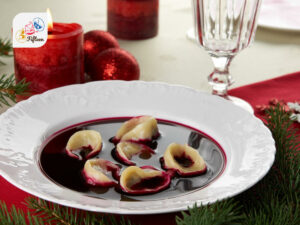
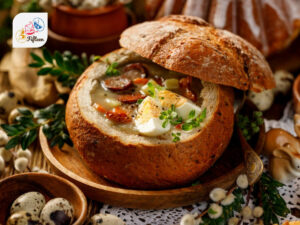
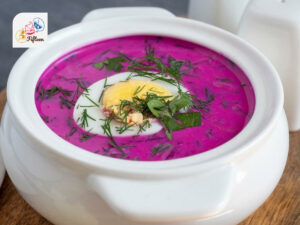
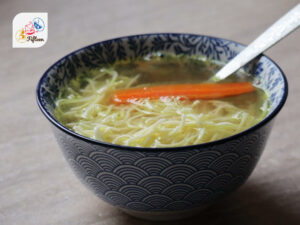
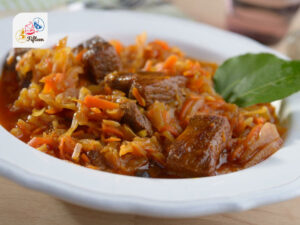
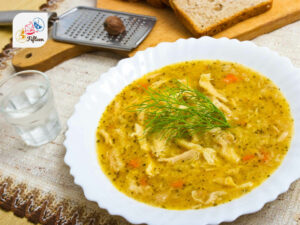
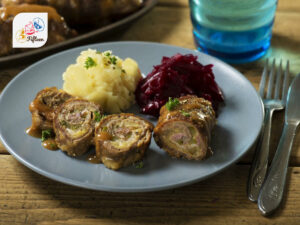
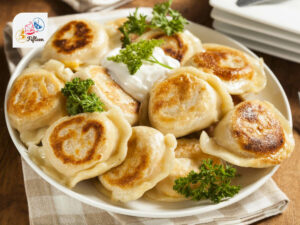
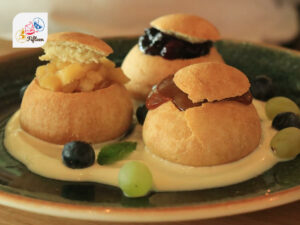
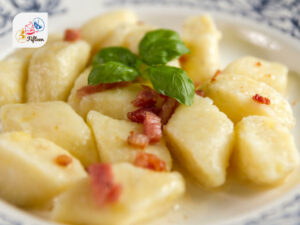
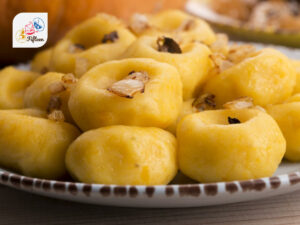


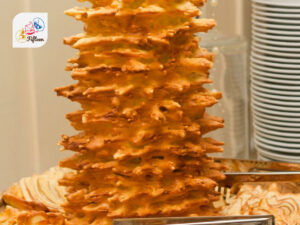

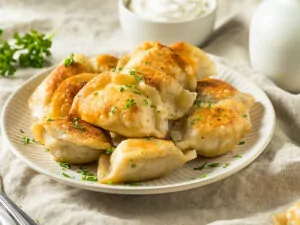

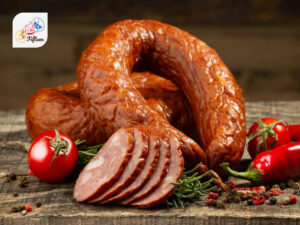

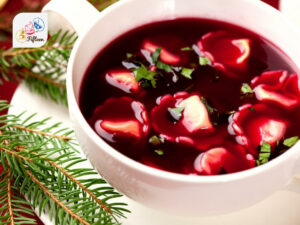
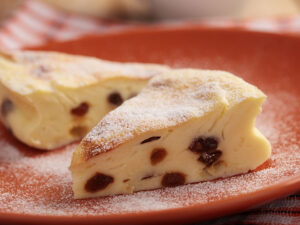

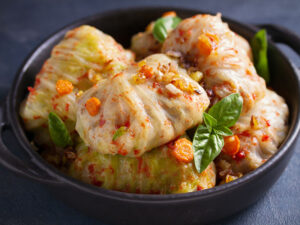
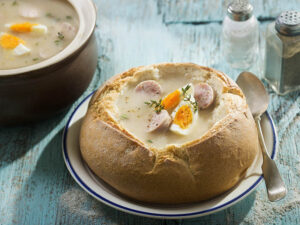
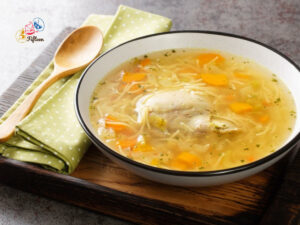
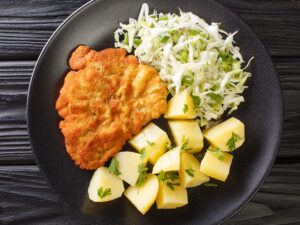
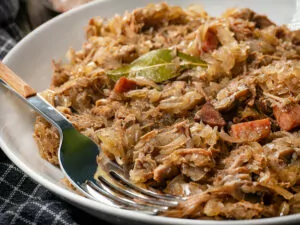

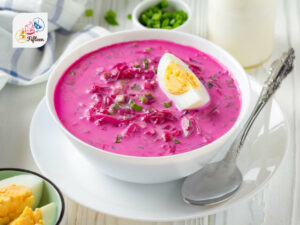
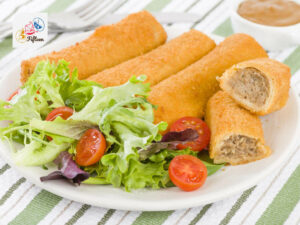
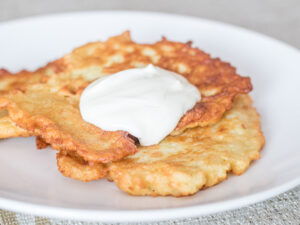
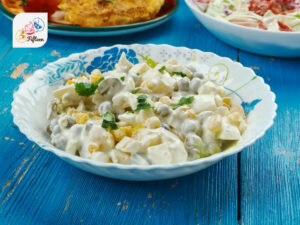
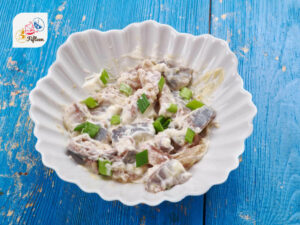
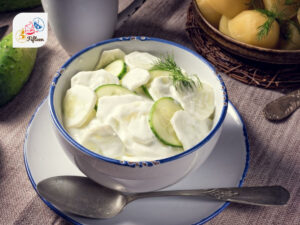
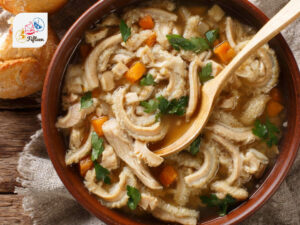
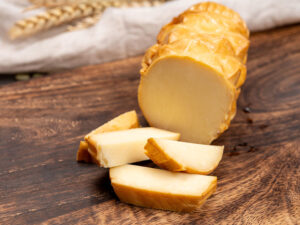
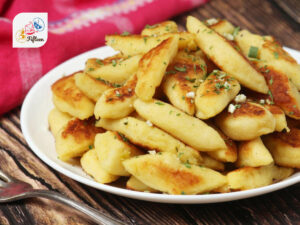
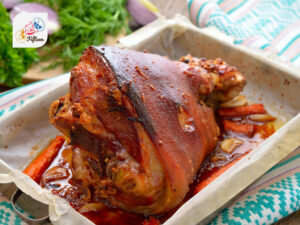
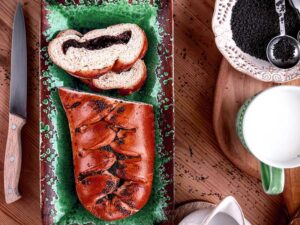
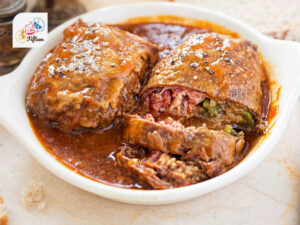
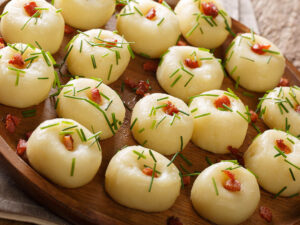
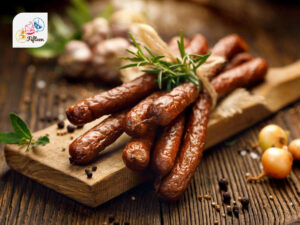
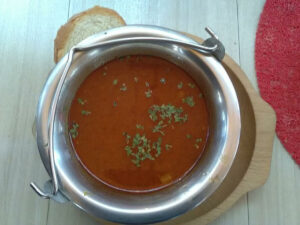
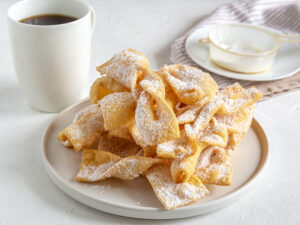
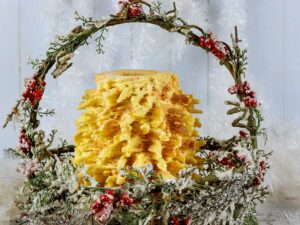

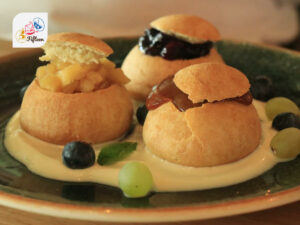
Jamie Scott
Editor in Chief, Senior Content Writer
Expertise
Home Cooking, Meal Planning, Recipe Development, Baking and Pastry, Food Editor, Cooking-video Maker, Western Food Evaluation Expert
Education
Le Cordon Bleu College of Culinary Arts
Local Community College, New York, NY
Jamie Scott is a skilled culinary expert and content creator specializing in Western cuisine. With over 15 years in the culinary field and formal training from Le Cordon Bleu, Paris, Jamie deeply understands how to blend nutrition with delicious flavors. His passion for cooking matches his commitment to making healthy eating accessible and enjoyable.
On Fifteen.net, Jamie brings a fresh perspective to classic dishes and beverages, offering readers insightful recipes, cooking tips, and a fresh view on meal planning that emphasizes taste, health, and simplicity.